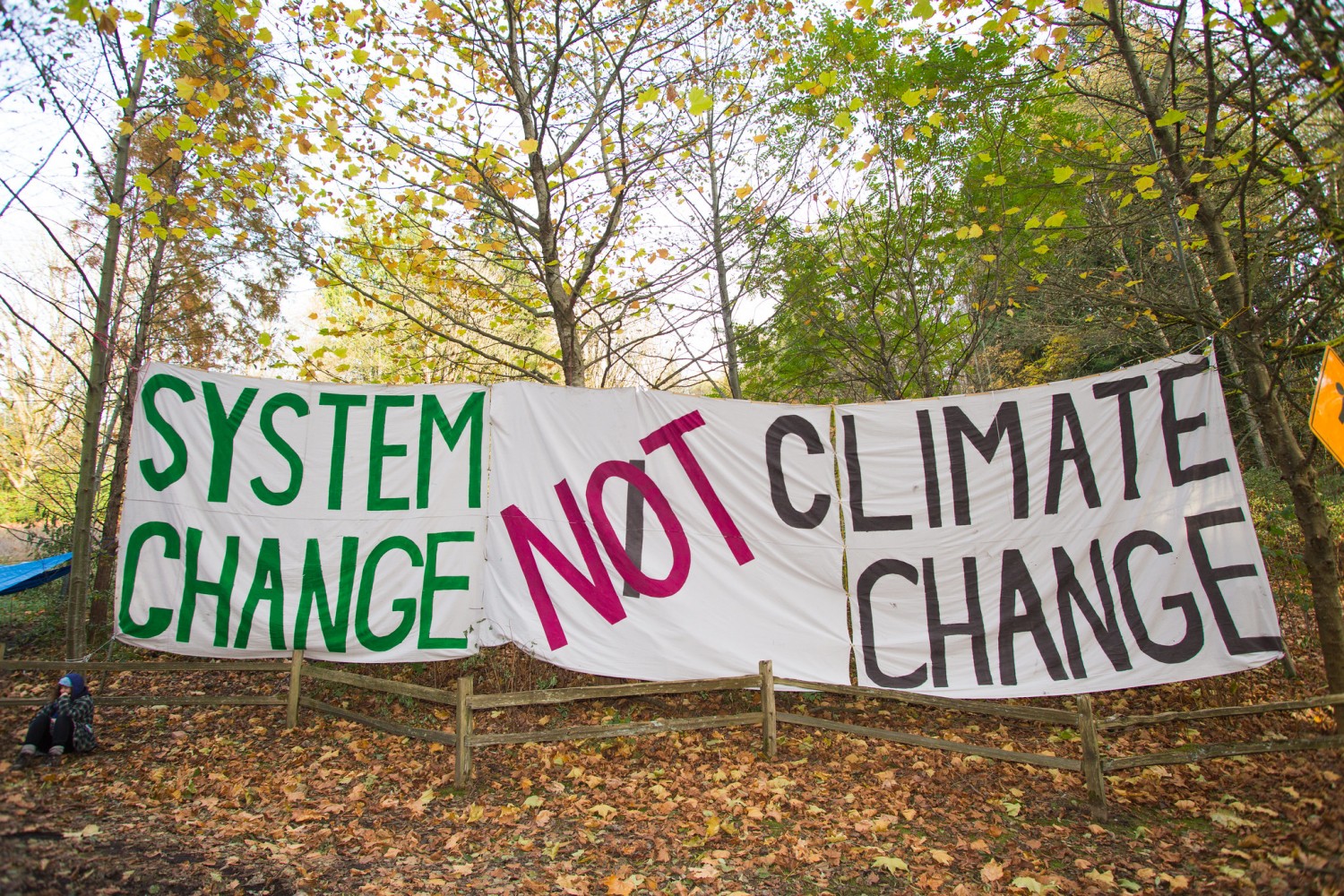
Indigenous land defenders see what settlers can’t
Our settler nation has long been stymied by lies and silence, obscuring the most insidious colonial crime of all: cultural genocide.
Canadian history can be reduced to one powerful truth: European settlers arrived here with a systematic plan to remove and displace Indigenous peoples from their ancestral lands to exploit natural resources.
The colonial project sought to assimilate Indigenous peoples. Europeans (who have immunity) brought the smallpox virus with them to the Americas, in turn wreaking havoc on Indigenous peoples with no natural defense system. This became one of the earliest forms of biological warfare, an intentional method of killing off the people whose land settlers wanted to steal. Then came the reserves plan, which forcibly removed the original inhabitants from their lands and into cageless prisons, making them vassals of the state.
What followed was the worst crime of all: the residential school system. It eliminated their customs, beliefs, and languages by literally yanking small children out of the arms of their parents. Our first prime minister, John A. MacDonald, once made a speech in parliament, when he justified the policy by arguing the parents of these children were “savages” and unable to install the kind of Christian forbearance needed for them to become good and productive adults.
The Indian Act became a toxic and racist symbol of oppression. It denied Indigenous peoples the right to vote until 1961. In our modern era, a Truth and Reconciliation Commission has tried to recognize past injustice and unpack many of these grievous wrongdoings. But a recent cross-Canada “uprising” of Indigenous land defenders has been stirred up by some “radical activists,” according to language used by segments of our population – including those now sitting in parliament. The old invective against Canada’s “other” peoples is being played out again in all its ugliness in comments written on the internet.
This past week, demonstrations that began over the imposition of the Coastal GasLink pipeline through Wet’suwet’en lands in the British Columbia interior struck too close to home for some. GO train service that links west-end stations from Hamilton to Mimico to Toronto, was overtaken by some of these land defenders. Barricades from Belleville to Caledonia to the very heartland of southern Ontario have made this a pan-Canada movement.
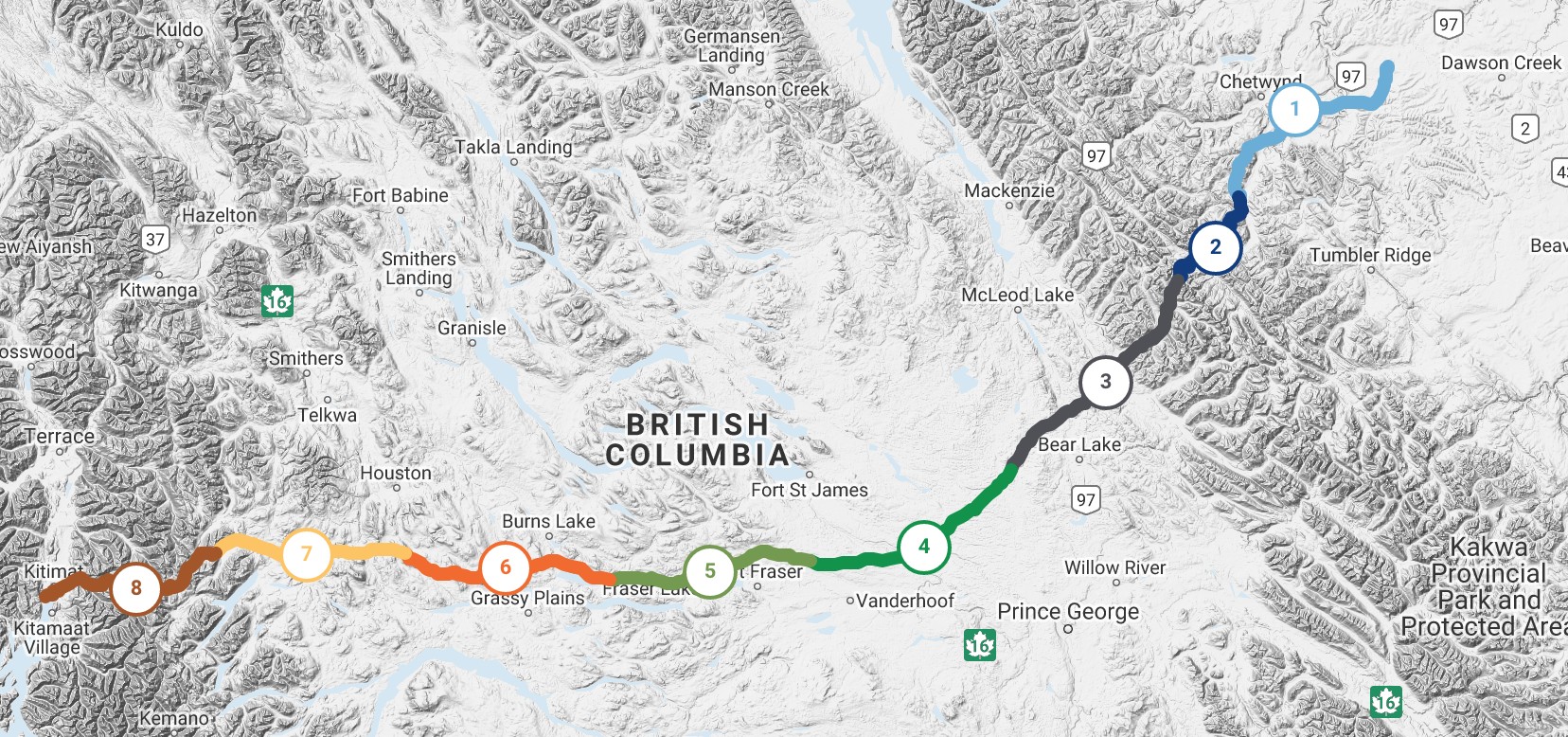
The route of the Coastal GasLink natural gas pipeline.
Well-paid TV and radio pundits alongside federal and provincial politicians seem unsure if this upheaval is a well-planned plot to disrupt and destroy, or simply a spontaneous outpouring of emotion based on righteous and pent-up resentments.
What has been clear from the outset is that our new generation of leaders, including our prime minister, never saw this coming – neither its extent, nor its staying power.
Local protests on unceded lands in the British Columbia interior are one thing, but seeing it in large, urban cities where commuters are hindered from getting to work, is stunning, and tantamount to a major insurrection – or so the thinking goes. Cities like Mississauga and Brampton located in Canada’s manufacturing heartland are vulnerable to these stoppages.
So, what appears at first blush to be a regional dispute, has become the catalyst for a re-examination of what amounts to a nation-wide injustice.
History has a way of condensing time. Lenin said there are decades when history stands still, and weeks when it moves forward by a decade. In Canada, this appears to be centuries old.
So, what is this country now facing?
First, the dispute. Its focus on disrupting train service is symbolic in the extreme. To Indigenous peoples, trains (historically referred to as ‘the bad medicine wagon’) and rail lines are not the much-lauded ribbons of steel that bound this nation together after Confederation, but the root cause of the eventual dismemberment of unceded lands standing in their way.
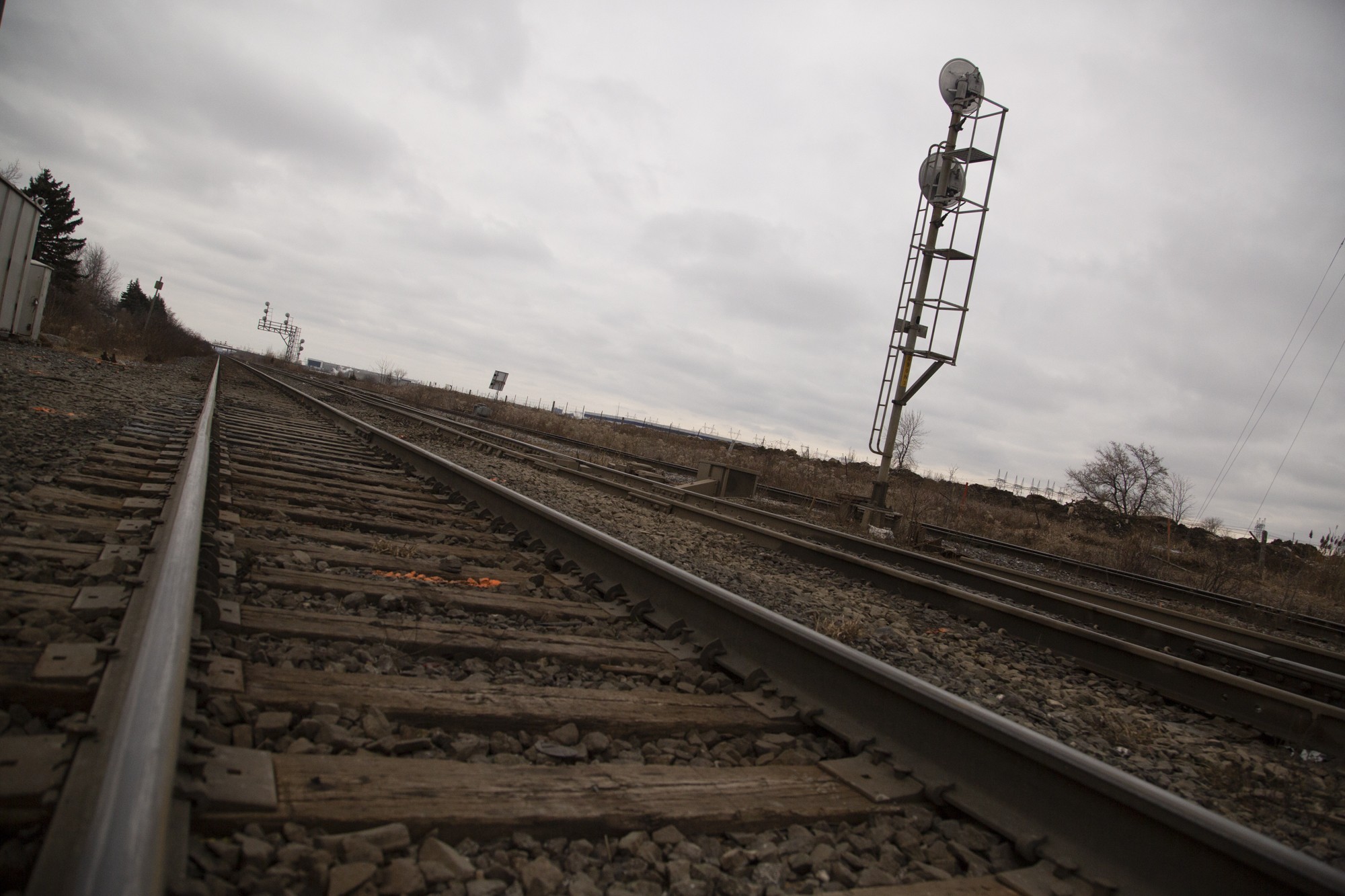
Those without an understanding of our complicated history, will fail to see the poignancy – and the cross-currents – of this moment in time.
All this is particularly troubling because there doesn’t appear to be an endgame in sight. The prime minister has condemned the blockades, but dares not stoke an already inflamed situation by using our national police force (the RCMP) to further anger the land defenders, thereby creating even more disruption. While some suggest he has shown a lack of leadership and it is way past time to get tough, the demonstrators believe they have little to lose. Four hundred years of their pain is now spilling forth and weighing down a country.
A plan to placate all the parties involved – our Indigenous peoples, citizens disrupted from their daily work-life routines, and businesses that have seen their supply chain lines stopped in their tracks – has yet to be installed.
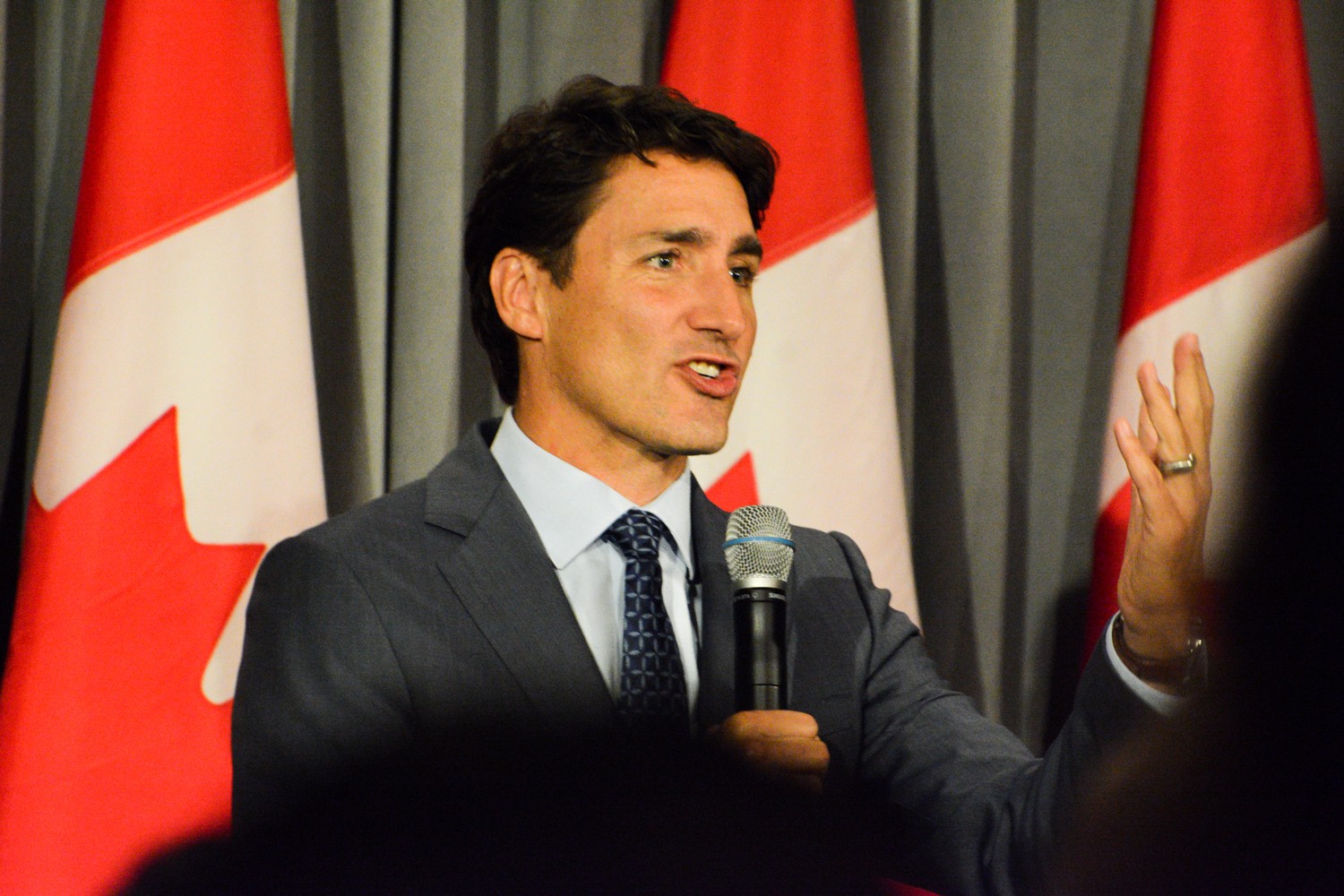
Prime Minister Justin Trudeau
In our highly romanticized but rather fault-filled version of settlement in the New World, the colonists arriving in North America saw a clean palette, a place to practice religious freedom and a more freebooting form of capitalism. This was other-Eden – with one major restrictor: the Indigenous inhabitants. They had to be dislodged from these rich lands, and categorized as “savages” to justify the massive displacement of entire peoples.
The Puritans who settled in New England actually thought these original inhabitants were babes in the woods, simply the gatekeepers who held the land until they had rightly captured it, and now they could use it for their own purposes. The new model of individualization, based on a freer market system, was a chance to “go forth and multiply,” both a biblical term and a new capitalism credo.
The ethnic cleansing or outright slaughter of innocents sped up under President Andrew Jackson as the U.S. army was given millions to put bounties on the heads of Indians. In Canada, the process was more nuanced, and less violent: they were pushed to the outskirts – sent to reserves. Over time, they would simply become invisible.
Was the water they drank tainted with effluents from nearby factories? Were their suicide rates 10 times the national average. Were their lifespans shorter, and their housing below standard? Was the rate of alcoholism or drug use or even sexual trafficking beyond epidemic?
Did any of this matter? Did anyone notice?
Finally, during his time in office, Prime Minister Stephen Harper issued an apology over the residential school mess. Finally, a truth and reconciliation effort was made to re-right the wrongs.
But this country never understood the Indigenous concept of “live lightly upon the land.”
While Canada created an economy based on exploiting our natural resources, a huge disconnect was developing between multiple parties with conflicting philosophies.
The tar sands in northern Alberta have been called one of the greatest crimes against Mother Nature. Land is desecrated to extract oil and move it to market. To anyone who believes our environment must be protected for our children and their children, this economic model is viewed with despair.
The blight from the oil sands is so overwhelming, it can be seen from outer space. It has given Canada a black eye in the international community for years, and stands in sharp contrast to the goals in the Paris Climate Accord. With issues of climate change manifesting themselves in the form of massive and uncontrollable fires (including the 2016 Fort McMurray ones, in the heart of the oilsands), Canada seems caught in the middle of an ongoing dispute.
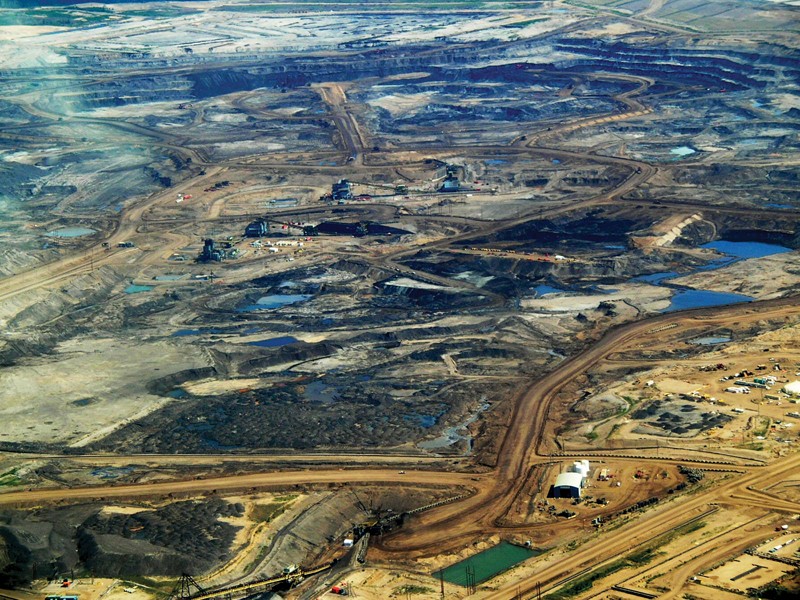
The Alberta tar sands.
It touts that it wants to meet carbon elimination targets, yet it buys the Trans Mountain pipeline for billions, which upon completion would carry millions of litres of crude oil through unceded Indigenous lands so it can eventually fill the tanks of gas guzzlers all over the world.
Yes, something more profound seems to be on trial these days.
As Canada tries sorting through its messy history, capitalism is shuddering because it is no longer business as usual. While the protests are big news, a substantial sidebar is the recent decision by Teck Resources to cancel its $20 billion oil sands mine in northern Alberta. This has crystalized an issue that has dogged our nation since inception: should our historic reliance on natural resources be the bedrock of our economic system, or do we need a new model? It’s becoming clearer that the old one is fraught with peril.
Throughout our history, Canada has been a world leader in the production of natural resources – gold, nickel, uranium, diamonds, lead, and in recent years, crude petroleum. We have the world's second largest oil reserves, and have taken an increasingly prominent position in natural resources extraction.
According to Jim Balsillie, one of the founders of Research in Motion, the producer of the famed BlackBerry, our embrace of the original NAFTA deal helped us move from a timid, low-tech nation and producer of primary products, to an innovative manufacturer.
At the local level, Peel region has been at the forefront of this change. In the 1950s, Malton saw the development of the Avro Arrow (CF-105). It was a world wonder, a supersonic interceptor jet aircraft designed and built right in our neighbourhood at A. V. Roe. It helped establish Canada as a leader in research and development. But this crowning achievement was stopped by the Conservative government of John Diefenbaker, and the negative impact is still being felt generations later.

A replica of the Avro Arrow
In the mid-1960s, 340 acres in southwest Mississauga, just off the QEW, became home to the Sheridan Park Research Centre, one of the first and most innovative industrial parks on the planet. It was home to the Atomic Energy of Canada, Abitibi, Warner Lambert, and The Ontario Research Foundation. It was funded by the feds and province, and was built to celebrate and expand science and technological innovation. It seemed so unCanadian. As the park aged, other innovators came along, including Hatch Associates and Xerox Research, and Mississauga has a new land-use urban master plan that will continue its makeover.
In 1967, SPAR Aerospace was formed in Brampton, through a management buyout of de Havilland Canada's special products division. It would eventually produce the famed Canadarm for NASA's Space Shuttle program, a remote manipulator system that was another marvel to the world.
While some urged Canada to focus future investment on creating a “knowledge-based economy” rather than a resource-based one, there was too much land, and too much oil and gas and gold and trees to extract, and our economy too often reverted to the easier resource-based model.
The oil sands looked like an economic godsend, until it didn’t.
When the Trudeau Liberals bought the Trans Mountain pipeline, and doubled down on this business model, it didn’t seem to connect with its other plan to cut carbon emissions to near zero.
Saying one thing, and doing another causes confusion and consternation (or outrage) in certain quarters, and perhaps that explains why the hereditary chiefs of the Wet’suwet’en nation felt the need to rise up and make a statement?
While the Avro Arrow, Canadarm and BlackBerry came to symbolize our potential, and the unfulfilled promise of Canadian innovation, the Trans Mountain pipeline is the obverse.
While there are still climate change deniers and environmentally disastrous regimes around the world, more advanced economies seem intent on moving towards a more substantive model of energy production. The awful air in India and China is killing the people, and they will soon have to find ways to stop the production of greenhouse gases.
But in countries like Germany, with fewer natural resources than Canada, a renewable energy plan has already been installed, based mainly on wind, solar and biomass. It is now being called "the world's first major renewable energy economy." The share of renewable electricity rose from just 3.4 percent of gross electricity consumption in 1990 to exceed 10 percent by 2005, and has reached almost 50 percent.
Meanwhile, Dutch engineers are building what will be the world’s largest archipelago of islands made up of sun-tracking solar panels. Growing resistance to the construction of wind turbines and solar panels on land has led the renewable energy industry to look for alternative options, and large islands of solar panels are under construction in reservoirs and lakes from the Netherlands to China, the UK and Japan.
The Dutch, which once led the world in reclaiming land from the sea through a series of dikes, will see construction begin this year on 15 solar islands on the Andijk reservoir in the north of the country. The islands, containing 73,500 panels, will have the sunflower-like ability to move to face the light.
And here’s the best news of all: these projects won’t displace whole nations of Indigenous peoples, or ruin the ecology of a country, but instead create a sustained supply of power that can service citizens and businesses forever, or until the sun doesn’t shine.
The great Ontario hydroelectric system (water power), that was the supplier of cheap and sustainable power to Ontario (and other markets) from its base in Niagara Falls for a hundred years, has now been wasted because it is top-heavy with salaries, and hasn’t retained the technological “oomph” and economic advantages it once had.
With no guarantees that its $20-billion investment will lead to future riches and a secure supply of oil, Teck Resources made the prudent decision to pull the plug on an oil sands mine.
We don’t need to blame the ruling Liberals in Ottawa or the outraged protesters for this decision. Capitalism at its core hates a disruption of goods to market, and whether it’s from ships at sea, or crude oil running through a pipeline, there needs to be a guarantee that those goods will get to market.
As progressive countries like Germany, The Netherlands and others have shown, you don’t need to ruin your environment to serve the needs of citizens. Those who believe in this way of doing business are the real miscreants.
This is not the right way, or the only way, and it shouldn’t be the Canadian way. We should be moving ourselves off the resource model so we can move forward. It’s cheaper and greener and more sustainable. Instead of pouring billions into the Trans Mountain Pipeline, Ottawa should have met with Alberta officials and said it’s going to take those billions and re-invest them in a renewable energy program that will replace the jobs lost from the eventual closure of the entire oil sands project.
Let’s clear up that black eye for good, and bring real justice to the treatment of our Indigenous peoples. Let’s create a sustainable economic model that leans on knowledge, not extraction.
Canada’s history can’t be re-written, but it can now be re-examined. The embrace of an old form of capitalism based on resource exploitation led, in many instances, to the cultural genocide that has infected our land. It also destroyed some of our planet, and in years to come, it will be seen by future generations as sheer folly – driven by greed, self-interest and ignorance.
Our Indigenous peoples are playing the long game here, and if their protests inconvenience some now, eventually they could consign to the dust heap a way of conducting business that has passed its shelf life.
A recent headline on Teck Resources decision to end its fiscal interests in northern Alberta – ‘ERA OF BIG OILSANDS MAY BE OVER’ – neatly sums up the fate of a capitalism credo that we have blindly followed for too many years.
It has taken a personal toll on our Indigenous peoples, and wreaked ecological havoc on our beautiful country.
These land defenders can see what many of us settlers simply can’t.
Submit a correction about this story


